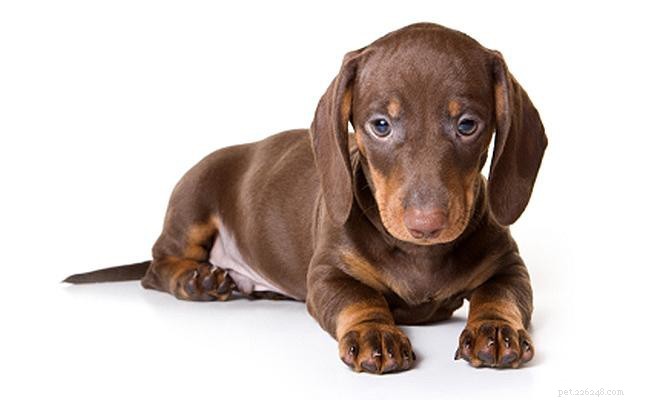
Notoriamente descritto dallo scrittore americano H. L. Mencken come "un cane alto per metà e un cane e mezzo lungo", il nome "Dachshund" significa letteralmente "cane tasso", da Dachs ("tasso") e Hund ("segugio" , cane").
Se vuoi essere corretto, accento tedesco... il nome dovrebbe essere pronunciato come – DAKS-hunt (o hot) (mai dash-hound).
I bassotti sono la prima mascotte in assoluto dei Giochi Olimpici e fu durante le Olimpiadi di Monaco del 1972 che fu creata una mascotte chiamata Waldi the Dog.
I bassotti attirano seguaci ardenti che non prenderebbero mai in considerazione l'idea di avere un'altra razza. In effetti, i bassotti sono spesso tenuti in coppia, il che va bene per loro, dal momento che sembrano identificarsi e preferire stare con altri "cani wiener".
La regina Vittoria è nota per essere attratta dalla razza:"Niente trasformerà la casa di un uomo in un castello più rapidamente ed efficacemente di un bassotto".
Se vuoi un cane che...
Una Dachsie potrebbe fare al caso tuo.
Se non vuoi occuparti di...
Un Dachshie potrebbe non essere adatto a te.
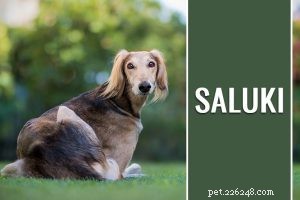
Secondo gli standard dell'American Kennel Club (AKC), ci sono due taglie accettate nello standard di razza del bassotto :standard e miniatura.
In Europa, riconoscono anche un bassotto di taglia “Kaninchenteckel” – “coniglio”. I bassotti coniglio sono più piccoli di statura rispetto alle miniature.
Nota: I termini non ufficiali come nano, tweenie, giocattolo, micro-mini o tazza da tè Bassotto non sono variazioni di taglia riconosciute dall'AKC, sebbene alcuni allevatori utilizzino questi termini e allevino per un cane più piccolo.
Il moniker "tweenie" è spesso usato in modo informale quando le dimensioni rientrano tra la miniatura e lo standard. Altri soprannomi non ufficiali che le persone hanno etichettato questa razza sono Little Hot Dog, Wiener Dog, Sausage Dog e Hotdog Dog.
Altezza
Peso
Un Dash sano dovrebbe aspettarsi di godere di un'aspettativa di vita compresa tra 12 e 16 anni se adeguatamente curato e alimentato con una dieta di buona qualità adatta alla sua età.
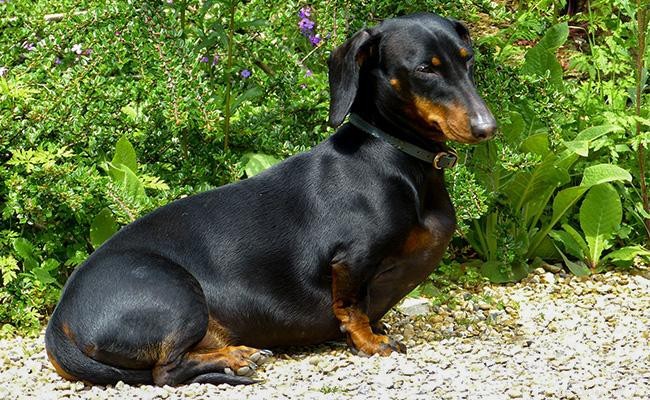
Non si può confondere un daschie con qualsiasi altra razza, anche se ci sono più di 6 varietà di questi deliziosi cagnolini, che a volte possono causare incomprensioni.
Chiamati spesso Cani da Salsiccia, grazie ai loro corpi lunghi e alle gambe corte, sono cani compatti ben muscolosi che vantano zampe anteriori potenti con teste lunghe e grossolanamente coniche con un cranio molto leggermente arcuato.
Regione facciale
La testa dovrebbe assottigliarsi uniformemente dalla corona leggermente arcuata alla punta del naso e dovrebbe essere tagliata in modo netto. Il cranio leggermente arcuato e dovrebbe inclinarsi gradualmente senza fermarsi nel muso leggermente arcuato (naso di montone) finemente formato.
L'osso del ponte sopra gli occhi è molto prominente. I loro occhi di medie dimensioni a mandorla sono ovali e disposti in diagonale.
I bassotti hanno gli occhi scuri, anche se i bassotti color cioccolato hanno gli occhi chiari e nei cani, con il mantello grigio/screziato, uno o entrambi possono essere occhi di pesce o di perla (walleyes) che sono accettabili come standard di razza.
Le loro orecchie sono attaccate alte vicino alla sommità della testa e moderatamente lunghe con portamento animato e il bordo anteriore delle orecchie che tocca le guance di un cane. Quando i Dachshies vengono avvisati da qualcosa, portano le orecchie in avanti e verso l'esterno.
Corpo
I loro colli, come i loro corpi, sono abbastanza lunghi, muscolosi, netti, stretti, senza giogaia sulla gola e leggermente arcuati sulla nuca. I bassotti in miniatura sono nerboruti, compatti e anche nelle mascelle e nel collo, non hanno pieghe né rughe né giogaia.
Standard o in miniatura, i dachshies hanno torace muscoloso, prominente e profondo.
Le spalle inclinate e il bacino piccolo e rigido dovrebbero trovarsi nella linea più diritta possibile tra i lombi e il garrese leggermente arcuati, e il primo è corto, rigido e largo.
Linea superiore:la linea più diritta possibile tra i lombi e il garrese. In un cane in forma, il torace dovrebbe essere la parte più bassa del corpo, con lo sterno prominente.
I cani sono ben nervati con addominali leggermente arcuati che consentono un'adeguata distanza da terra per consentire ai cani di muoversi liberamente.
Posteriori potenti e ben muscolosi con groppa ampia e piena e groppa estesa, rotonda e muscolosa che si inclina leggermente verso la coda.
La loro forte parte superiore della coscia è ad angolo retto rispetto al bacino di un cane e alla parte inferiore della coscia ben muscolosa. Le zampe anteriori sono piene, larghe e coese con le zampe posteriori di un cane che sono leggermente più strette e piccole.
Lettura consigliata: Nomi maestosi per i tuoi cani maschi, Nomi carini per cani femmine
Per i proprietari per la prima volta
I bassotti non sono la scelta migliore per i proprietari per la prima volta perché sono poco difficili da addestrare e si abbinano meglio a persone consapevoli della razza e delle loro esigenze specifiche, che includono i problemi di salute di cui è nota la razza.
Se non gestite e addestrate adeguatamente fin dall'inizio, queste piccole e affascinanti personalità possono diventare disordinate e ribelli, il che rende difficile per i proprietari gestirle.
Tuttavia, nelle mani giuste e con molto tempo, spazio e situazione, è possibile superare la loro vena ostinata. Tieni presente che se un bassotto percepisce un odore di qualcosa che attira di più l'attenzione, è probabile che si scagli dietro.
Adattabilità
Cordialità
Comportamento generale

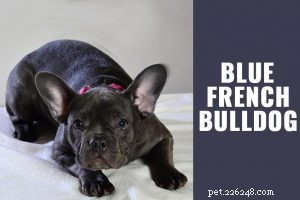
I Doxies sono cani energici e "pieni di fagioli". Considera questo livello di energia quando determini di quante calorie ha bisogno il tuo cane, in particolare se stai facendo qualsiasi lavoro o addestramento.
Gli allevatori ti darebbero un programma di alimentazione (se prendi un cucciolo da loro) ed è importante attenersi al programma. Cambiare la dieta di un cucciolo dovrebbe essere fatto lentamente e assicurandosi che non sviluppino disturbi allo stomaco.
Rough Feeding guide for Dachshies
As a rough guide, recommended daily amount:1 to 1 1/2 cups of high-quality dry food a day. A puppy should be fed with nutritious meals which are evenly spread out throughout the day. It’s best to feed 2 or 3 times a day:
Remember, the feedings depend on puppy’s build. Once a puppy is 11 months old they can be fed adult dog food depending on their activity level.
Remember; these feedings depend on your dog’s eating tendencies and depending on their energy level and activity.
Grown-up dogs need to be fed a good quality diet that meets all their nutritional requirements while keeping a close eye on a dog’s weight.
Here is a rough feeding guide.
The Dachshund is known to be a sharp, small dog, yet they are little hard to train thanks to the fact they are quite independent by nature and have a mind of their own which can be put down to the “hound” in them.
However, when they are given the right amount of positive reinforcement training from puppyhood as well as with a lot of persistence and patience, doxies can be trained properly.
The dachshund is naturally vigilant, which makes them a steadfast watcher to train. Their razor-sharp and persistent look will certainly scare away any unsolicited entries.
Actually, a research study published in ‘Applied Animal Behavior Science Journal’ in 2008 ranked the dachshund as one of the most aggressive breeds towards both strangers and other animals.
While Dachshunds have many traits, cleverness isn’t essentially their strongest point. Studies show that a Dachshund will follow the first command just about 50% of the time.
The Stanley Coren’s book ‘Intelligence of Dogs’ has stated that the Dachshund is the 49th most intelligent dog breed. Nevertheless, the AKC breed standards portray the doxies as an intelligent and lively breed.
Regardless of all this, they are often difficult to housebreak, and this needs patience and perseverance. While they are only ranked as of average intelligence, this does not make the Dachshund a dim-witted dog.
They are considered a dog that is convincingly clever and has a rather good intelligence for a working dog breed.
Stubborn, Subjective and very intelligent, doxies are exactly like their big cousins the greyhound, will not comply with you if he sees monotonous or unexciting – mostly, if he is fixed on something, he thinks is much more interesting.
The great writer E.B. White wrote forthrightly about the Dachshund stubbornness, “Being the owner of dachshunds, to me, a book on dog discipline becomes a volume of inspired humor. Every sentence is a riot.”
Smooth haired doxies wears a fine, short, low shedding, extremely glossy coat that is soft to the touch. They come in the variety of colors and are low maintenance in the grooming department thanks to their coats being so short.
A quick wipe off with chamois leather keeps their coats lustrous. Though, these cutie pies love the tête-à-tête contact they get during a grooming session. This also allows the pet parents to check their dog’s skin and to ensure there are no bumps and lumps in their body.
Longhaired dachshunds shed regular grooming will prevent matting as well as helps loose hair from falling off the dog.
Using sectioning clips can help you to ensure that the pup’s top and undercoat or both tangle free. Just clip up sections of the fur, allowing you to efficiently brush every area carefully to get rid of mats that may be building up.
Long haired doxies have fur that should be trimmed often, predominantly where it grows infringes, such as around their ears and feet.
The wire doxies require a different kind of grooming. The fallen or dead hairs in his coat must be plucked out regularly, called stripping. A professional groomer can show you how to do it.
You may also want to trim his bushy beard and eyebrows to keep them looking smart. For the wire and longhair doxies, trim excess hair stuck between the paw pads.
Dachshunds may be prone to the following health problems.
Intervertebral Disc Disease (IVDD)
This is a common spinal disease in dachshunds. When the fibrocartilaginous cushions between the vertebrae (except the first two cervical vertebrae) in a dog’s spine degenerate or ruptures or herniates into the spinal canal, resulting in severe inflammation and pain, partial loss of limb function and even paralysis.
Progressive retinal atrophy (PRA) – Deterioration of the retina which causes progressive vision loss
Allergies – Common allergens consist of dog foods that contain elevated levels of grains and other cereal-type fillers, Dust mites, airborne pollens, Flea, and tick bites.
Minor Concerns
Bloat/gastric torsion
Gastric Dilatation -Volvulus, or more generally referred to as gastric torsion or Bloat typically occurs in with deep-chested breeds.
Canine bloat can happen inadvertently, in which the stomach becomes overstretched and rotated by excessive gas, fluid, froth or all of these.
Torsion (volvulus) is when the whole abdomen twisted at either end i.e. it is sealed off at both its ends, identical to the ends of sausage is twisted and closed at both ends.
This is a serious condition and if the dog is not brought for veterinary care and surgery, the dog will not survive.
Cushing’s disease
(AKA hypercortisolism, hyperadrenocorticism) this is an endocrine disorder that’s typically found in older Dachshunds. The most common cause of Cushing’s disease (85% of all cases in dogs) is a tumor (may be either benign or malignant) of the pituitary gland.
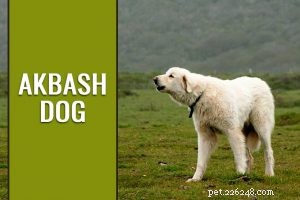
The price of doxie puppies will cost you from $1,000 – $2,000 from a reputable breeder. Then there are licenses, vaccines, preventative medicine, heartworm testing and – of course – spaying or neutering. You’ve added an extra $400.00 to the actual price.
Alternatively, you can adopt at dog rescue centers and animal shelters for around $300. They exist in all the countries and will also have grown-up dogs to re-home.
Our 2018 list for the most reputable breeders in America
History
The Dachshund; in German “ Dach” means “badger” and “Hund” mean “dog.” Widely popular in Germany as a hunting dog, the Dachshunds are famous for their sleek, short frame.
The convenient frame allows it to track animals in all crannies and nooks. The Wire Haired Dachshund was first seen in the 19 th century after the prominence of long and smooth coated versions.
Appearance
The Wire Haired Dachshund consists of a sturdy, low frame with a soft undercoat and short outer coat.
It appears in different varieties of color including red, dark gray, black and tan. While small, these dogs are still strongly built with well-developed forelegs, and a deep, broad chest.
He has a beard, bushy eyebrows, and a short, thick coat.
Size
Lifespan
The average lifespan of a Wire Haired Dachshund is between 14-16 years. Monitor their food habits since they tend to become obese.
Temperament
Health
Exercise
Daily exercise requirements include a minimum of 30 minutes of walking.
Early socialization is necessary because Dachshunds hunting instincts can easily drive him in chase of a quarry or a scent.
They were initially bred to dig holes in the ground. Check your home’s fence every now and then.
Nutrition and Food
These dogs have an excellent metabolism. This means Wire Haired Dachshunds burn a lot of energy and they should eat very little and often.
Invest in small dog breed foods as they contain smaller kibble sizes and key nutrients in balance. This, in turn, enhances chewing and digestion.
Grooming
History
Originally from Germany, Longhaired Dachshunds were initially bred in the 16 th century. It was created by cross-breeding Longhaired German pointers and short-haired Dachshunds over a period of time.
Longhaired Dachshund and Irish Setter share similar fur texture.
Appearance
The main variation between Shorthaired Dachshunds and Longhaired Dachshunds are the coat texture. The fur appears brown, black, reddish-brown, or chestnut-colored.
Longhaired Dachshund features soft, wavy, long hair, much longer on the ears, abdomen, and neck. It forms visible fringes on the upper portion of the legs and also on the tail as well.
Size
Lifespan
The average lifespan of a Longhaired Dachshund is between 12-15 years. Regulate their food habits since they tend to become obese.
Temperament
Health
Mostly a very healthy dog breed, the Dachshunds are expected to live between 12-16 years with good care, diet, and exercise.
To avoid disc damage, make sure that your Longhaired Dachshunds are not gaining weight or becoming obese.
Keep an eye on all his activities. Longhaired Dachshunds are prone to ear infections. Maintain their ears regularly.
Exercise
Many Dachshunds owners believe that small dogs like them can manage with just running and jumping around the house. Keep it as simple as possible. That’s the secret in handling any dog for that matter.
These dogs require exercise to keep their back strong. Two moderate walks daily should solve this problem. Watch your Dachshund because they can injure themselves while jumping and running around.
Being social by nature, they seldom do well as guard dogs. Dachshunds prefer spending time with their human partners more.
Nutrition and Food
Bear in mind, that Dachshunds are prone to obesity. More than normal health reasons, obese dogs can strain or injure their long back. This can further damage or rupture discs.
Feed him only best quality dry kibble. Avoid table scraps completely if possible. Never feed cooked bones and other high-fat foods.
Dachshunds are instinctively natural hound dogs. Make sure no food is kept outside other than their daily requirement.
Grooming